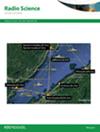基于灰色优化的自适应模型预测控制提高了无线充电系统的效率和误差容忍度
IF 1.5
4区 地球科学
Q3 ASTRONOMY & ASTROPHYSICS
引用次数: 0
摘要
无线能量传输(WPT)系统在电动汽车(EV)充电中受到了广泛关注,因为它具有高效、非接触式能量传输的潜力,与传统的插入式充电方式相比,它提供了更大的便利性和安全性。相移全桥逆变器和连续控制集模型预测控制是WPT系统一次侧控制技术的基础。然后通过将控制器的灰狼优化问题转化为最小化成本函数值的问题来找到最优控制变量,以获得系统的最佳响应。仿真结果表明,控制系统工作频率为10khz,实现实时电压调节,输出功率约8.6 kW。与传统技术相比,利用干扰因素解决不对准问题,提高了传输功率。该系统通过硬件实现和测试验证,显示出稳定的输出功率和电压调节,平均效率为95.2%,证明了其在实际电动汽车充电应用中的可靠性。该方法提高了双LCC补偿WPT系统的性能,使其适用于紧凑、轻便的接收机应用,并能够实时调节系统输出电压。本文章由计算机程序翻译,如有差异,请以英文原文为准。
Gray optimized adaptive model predictive control for enhanced efficiency and misalignment tolerance in wireless EV charging systems
Wireless power transfer (WPT) systems have gained a lot of attention in electric vehicle (EV) charging due to their potential for efficient, contactless energy transfer, offering enhanced convenience and safety compared to traditional plug-in methods. A phase-shifted full bridge inverter and continuous control set model predictive control are the foundations of a suggested primary side control technique for the WPT system. The optimal control variable is then found by converting the controller's gray wolf optimization issue into a problem of minimizing the cost function's value in order to get the best response from the system. According to the findings of the simulation, the control system operates at a frequency of 10 kHz to achieve real-time voltage adjustment, and about 8.6 kW of power is transmitted. Compared with the conventional technique, the power transferred is improved when misalignment is addressed by interference factors. The system, validated through hardware implementation and testing, demonstrated stable output power and voltage regulation with an average efficiency of 95.2%, demonstrating its reliability for real-world EV charging applications. The proposed method enhances double LCC compensated WPT systems' performance, making them suitable for compact, lightweight receiver applications, and enables real-time regulation of system output voltage.
求助全文
通过发布文献求助,成功后即可免费获取论文全文。
去求助
来源期刊

Radio Science
工程技术-地球化学与地球物理
CiteScore
3.30
自引率
12.50%
发文量
112
审稿时长
1 months
期刊介绍:
Radio Science (RDS) publishes original scientific contributions on radio-frequency electromagnetic-propagation and its applications. Contributions covering measurement, modelling, prediction and forecasting techniques pertinent to fields and waves - including antennas, signals and systems, the terrestrial and space environment and radio propagation problems in radio astronomy - are welcome. Contributions may address propagation through, interaction with, and remote sensing of structures, geophysical media, plasmas, and materials, as well as the application of radio frequency electromagnetic techniques to remote sensing of the Earth and other bodies in the solar system.
 求助内容:
求助内容: 应助结果提醒方式:
应助结果提醒方式:


